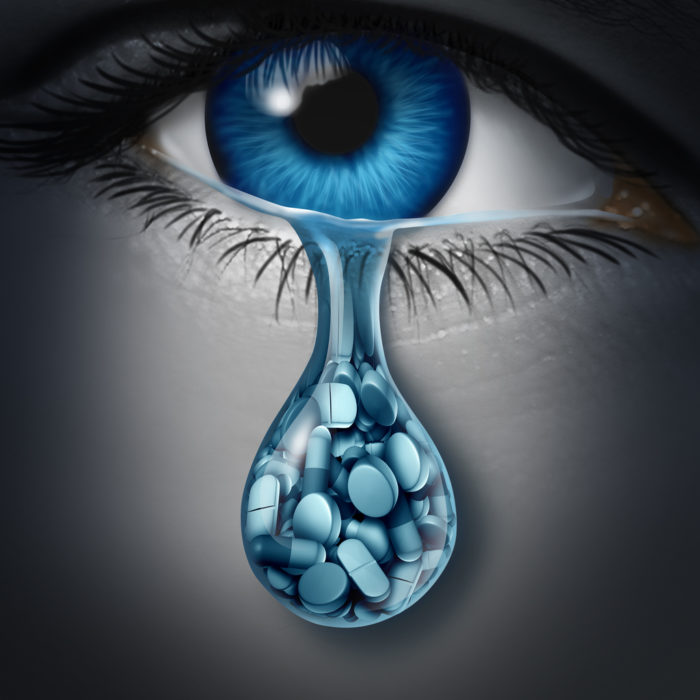Is the Opioid Problem Worse Than You Think?
CDC Issues Report That Says Overdoses Are Rising in US
The Centers for Disease Control and Prevention’s March 2018 issue of Vital Signs addresses the opioid epidemic in America and cites statistics that show the problem is worsening.
According to the agency, overdoses caused by opioids spiked 30 percent between July 2016 and September 2017, the latest period for which data are available. The spike affected 52 areas in 45 states. The Midwest was hit the hardest, with Illinois, Wisconsin and other states in the region experiencing a 70-percent increase in overdoses between the same dates. Urban areas in Delaware, Pennsylvania and 14 more states witnessed a 54-percent increase in overdoses.
“Our results through September 2017 show opioid overdoses are increasing across all regions, most states for most men and women and most age groups,” Dr. Anne Schuchat, the agency’s acting director, says in a story in The Guardian titled “Opioid crisis: overdoses increased by a third across US in 14 months, says CDC.” “We’re currently seeing the highest overdose death rates ever recorded in the United States. The infrastructure to fully tackle this problem is fragile.”
The agency further found that emergency-department visits by patients who overdosed on opioids increased 30 percent throughout the United States.
“People who have had an overdose are more likely to have another, so being seen in the ED is an opportunity for action,” Vital Signs reports in the issue, titled “Opioid Overdoses Treated in Emergency Departments.”
To help prevent another spike in injuries and deaths from opioids, emergency departments – and the doctors and nurses who staff them – are urged to alert public officials if they see an increase in overdoses. Also, a program by which naloxone, a drug that reverse the effects of opioids, is distributed to first responders can be set up to improve outcomes for victims.
“Repeat overdoses may be prevented with medication-assisted treatment (MAT) for opioid use disorder (OUD), which is defined as a problematic pattern of opioid use,” Vital Signs states. “EDs can provide naloxone, link patients to treatment and referral services, and provide health departments with critical data on overdoses. ED data provide an early warning system for health departments to identify increases in opioid overdoses more quickly and coordinate response efforts. This fast-moving epidemic does not stay within state and county lines. Coordinated action between EDs, health departments, mental health and treatment providers, community-based organizations, and law enforcement can prevent opioid overdose and death.”
Another best practice recommended by the agency is aimed at those prescribing the powerful pills that are causing more than 100 fatalities every day. It calls on clinicians to follow the “CDC Guideline for Prescribing Opioids for Chronic Pain.” The document demands the use of drug-monitoring programs to inform decisions on patient care.
“This guideline provides recommendations for primary care clinicians who are prescribing opioids for chronic pain outside of active cancer treatment, palliative care, and end-of-life care,” it reads. “The guideline addresses 1) when to initiate or continue opioids for chronic pain; 2) opioid selection, dosage, duration, follow-up, and discontinuation; and 3) assessing risk and addressing harms of opioid use. CDC developed the guideline using the Grading of Recommendations Assessment, Development, and Evaluation (GRADE) framework, and recommendations are made on the basis of a systematic review of the scientific evidence while considering benefits and harms, values and preferences, and resource allocation. CDC obtained input from experts, stakeholders, the public, peer reviewers, and a federally chartered advisory committee. It is important that patients receive appropriate pain treatment with careful consideration of the benefits and risks of treatment options. This guideline is intended to improve communication between clinicians and patients about the risks and benefits of opioid therapy for chronic pain, improve the safety and effectiveness of pain treatment, and reduce the risks associated with long-term opioid therapy, including opioid use disorder, overdose, and death.”
The guideline includes a checklist for long-term (more than three months) opioid therapy that includes evidence about such therapy, offers nonopioid-therapy options and encourages evaluation of risks and benefits.
There also is a Web site with additional resources to help those in the healthcare field. The Web site has a section for patients, too, who owe it to themselves to be responsible when taking dangerous drugs, no matter how much pain they are suffering. It includes a tip card, an infographic, a poster, a podcast and much more.
“Living with chronic pain can be challenging,” the Web site states. “It is essential that you and your doctor discuss treatment options with all of the risks and benefits carefully considered. Some medications, such as prescription opioids, can help relieve pain in the short term but also come with serious risks and potential complications – and must be prescribed and used carefully.”
Physicians should carefully consider the risks of opioids:
Share This



